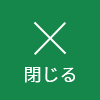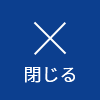Soma Area Ethnic Customs Exhibit
The Soma area faces the Pacific Ocean to the east, hemmed in on the west by the Abukuma Heights, a place blessed with abundant nature and a relatively temperate climate. A certain lifestyle and culture emerged here with their roots in that climate, and have been handed down through generations. The way we live, think, and act today have all been impacted by this traditional culture of everyday life. Studying our traditional folk culture can provide hints to our own lifestyle and thought process today.
We dive into the realm of folk customs, examining the livelihood and religious beliefs centered around the relationship between humans and horses. We also take a look at how the blessings of the Niida River have been used through salmon fishing and fishing tackle, as well as the use of through horses (term used for riding the same horse all the way on a route rather than taking time to transfer goods to another horse) in the transport and commerce of salmon.
Life with horses
Shirokaki (preparing rice fields), Kanagutsu-ya (hoof specialist), ema (lit. “picture-horse,” small wooden plaques on which people write prayers or wishes), and Batoukannon (lit. “horse-head kannon,” Buddhist guardian deity for horses)
The blessings of Niida River
Salmon, fish trap spots, fishing tackle for river fish, and fish dishes
Life with Horses

The Soma area is called the hometown of Nomaoi, but our relationship with horses isn’t limited to that one event. Horses were thought of in ancient times as the form of transport for gods and people of high rank. They have served a wide variety of purposes for the masses as well over the years, as mounts for samurai during the Middle Ages, to transporting good and helping with farming from the Momoyama Period (1574-1600) through the end of World War II.
In this corner of the museum, we showcase the deep connection between humans and horses, as well as the religious beliefs developed to pray for the safety of horses.
Shirokaki (Preparing Rice Fields)

Shirokaki refers to the tilling of a rice paddy in spring. First, farmers use a hoe to break apart the earth. Then they add fertilizer and water, and attach a harrow or rake known as a manga (lit. “horse-hoe”) to a horse to churn the earth together, making it soft and ready for planting. After this hard work is finished, farmers would pray to the god of fields known as Manga-arai for an abundant harvest.
Kanagutsu-ya (Hoof Specialist)

Horseshoes are vital for protecting a horse’s feet, and are attached to the sole of a horse’s hooves. Town and village hoof specialists known as kanagutsu-ya were very active from the Meiji Restoration (1868) through the end of World War II, as the use of horses for transporting goods and tilling land became widespread. In Soma, the hometown of Nomaoi, hoof specialists continue to hold important roles even today.
Batoukannon (Horse-Head Kannon)

Batoukannon is said to have a horse head placed above their head, and wears a wrath-filled expression as they destroy evil spirits. A horse’s recovery from an illness was considered by the common person to be a divine reward for virtuous deeds, and during the Edo period this belief spread as a folk religion. Stone monuments honoring Batoukannon were erected at crossroads on old routes that people once traversed with their horses. Even now such monuments can still be spotted on old routes that run through the city.
The Blessings of the Niida River

Salmon are east Japan’s specialty, with fishing mainly focused in the Tohoku and Hokuriku regions. Salmon fishing largely centered around fishing in rivers until the Edo Period (1600-1868).
It is said that on the 15th day of the 11th month of the old Japanese calendar, the king of salmon would climb upriver along with his family. Furthermore, salmon were considered an indispensable part of the New Year’s Eve meal, and were used as gifts.
In this corner of the museum, we examine the lives and wisdoms of the people who focused their food and livelihoods around the Niida River while protecting its blessings.
Salmon Fishing in the Niida River

Records of salmon fishing in the Niida River go back roughly 370 years. Fishers used wooden slats made of bamboo to dam the stream, then catching the salmon that had swum upstream with casting nets or harpoons. Fishers focused solely on catching fish from the Edo Period through the first half of the Meiji Period (1868-1912), without any efforts to protect egg-laying. However, with the formation of the Niida River Salmon Breeding Association in 1892, it established salmon spawning zones and made efforts to safeguard fishing grounds, and established a manmade hatchery in 1904.

Salmon is appreciated as a taste of autumn, and is also salted and enjoyed as a preserved food. Standard salmon dishes include salted and grilled salmon, as well as harakomeshi, a dish made using both salmon and salmon eggs.
Through Horses

From the Edo Period to the early modern period, horses were used to transport salmon from the Soma area over the Yagisawa Pass to Kawamata and the Nakadori area to the west. Riders would not make any relay stops along the way in order to preserve the freshness of the salmon. The horses used to make these direct deliveries were called tooshi-uma, or “through horses.” Riders would have salmon loaded into 4 baskets for the horses to carry, and would depart with 3 or 4 horses in the afternoon to avoid the mid-day sun.
Road Signs

Road signs known as michishirube were placed along the roadside in the form of stone pillars displaying directions and distances in order to prevent travelers from becoming lost. They were often posted at crossroads in cities or near temples or shrines.
There are some michishirube that also served as stone Buddhist images or statues to honor the guardian deity of travelers. These were used to pray for safe travels.
Main Exhibits
- Diorama of preparing rice fields: models of a horse; a harrow (manga); a saddle used for tilling with horses; hamo (daggertooth pike conger); nose rod
- Straw-cutting machines; straw, cut straw; woven mat, manger; packsaddle
- Offering to Manga-arai: heisoku (offering of rope or paper hung on trees in Shinto shrines); rice saplings; rice cakes
- Ema from the Nara Period (710-794 CE) (model); framed picture of a shinme (holy horse ridden by a god), drawn by Hirafuku Suian (declared a city tangible cultural property)
- Stone monument bearing the inscription of Batoukanzeon, another name of Batoukannon; holy offering used in Hindu ritual known as homa to Batou; talisman of a monkey
- Kanagutsu-ya: bellows; anvil; hammer; pliers; nail pullers; file; nail clippers; horseshoes; nails; army horse medal
- Fish trap spot: model of a fish trap spot; model of a fish trap; taxidermy of a salmon; documents from the Niida River Salmon Breeding Association; samples of salmon dishes
- River fishing tackle: riverboat; casting net; harpoon; nozokibako (box with glass bottom used to look underwater); biku (basket used for carrying fish); scoop net (made from Japanese ash tree); loach trap; eel trap; crab trap; benkei (Minamisoma traditional dish made with daikon radishes, dried taro stems, and red chili peppers)
- Through horses: salmon pickling basket, botekago (baskets strapped to poles for carrying on either side of the horse, tethering stone, horse bells, michishirube (stone pillar road sign)
- この記事に関するお問い合わせ先
- このページに関するアンケート
-
より良いウェブサイトにするために、このページのご感想をお聞かせください。















更新日:2020年12月02日